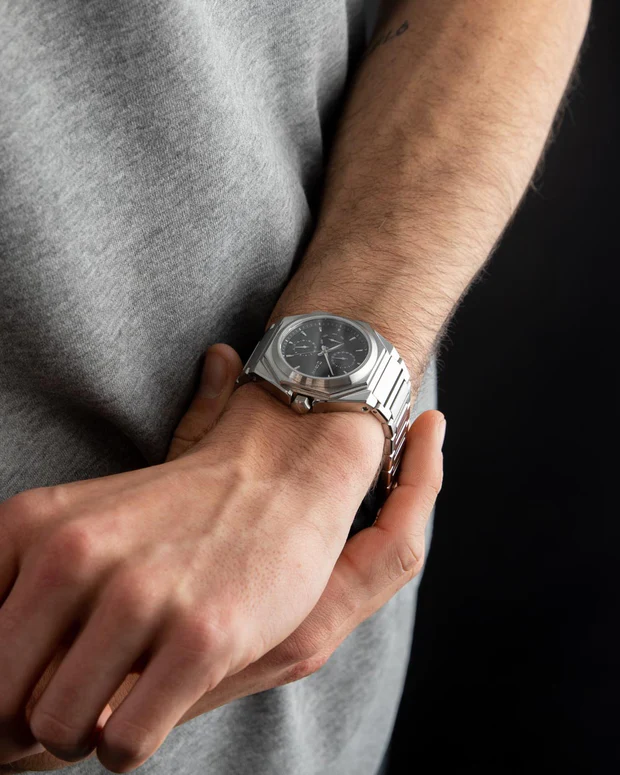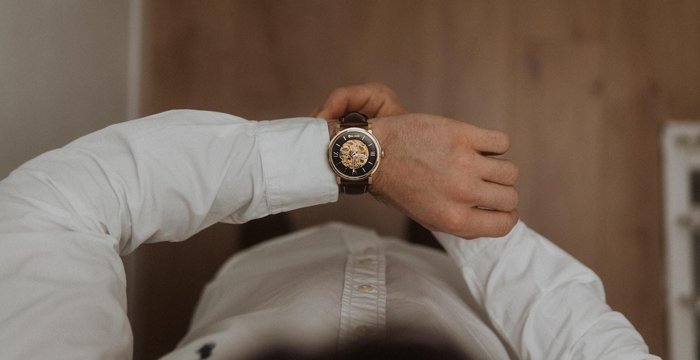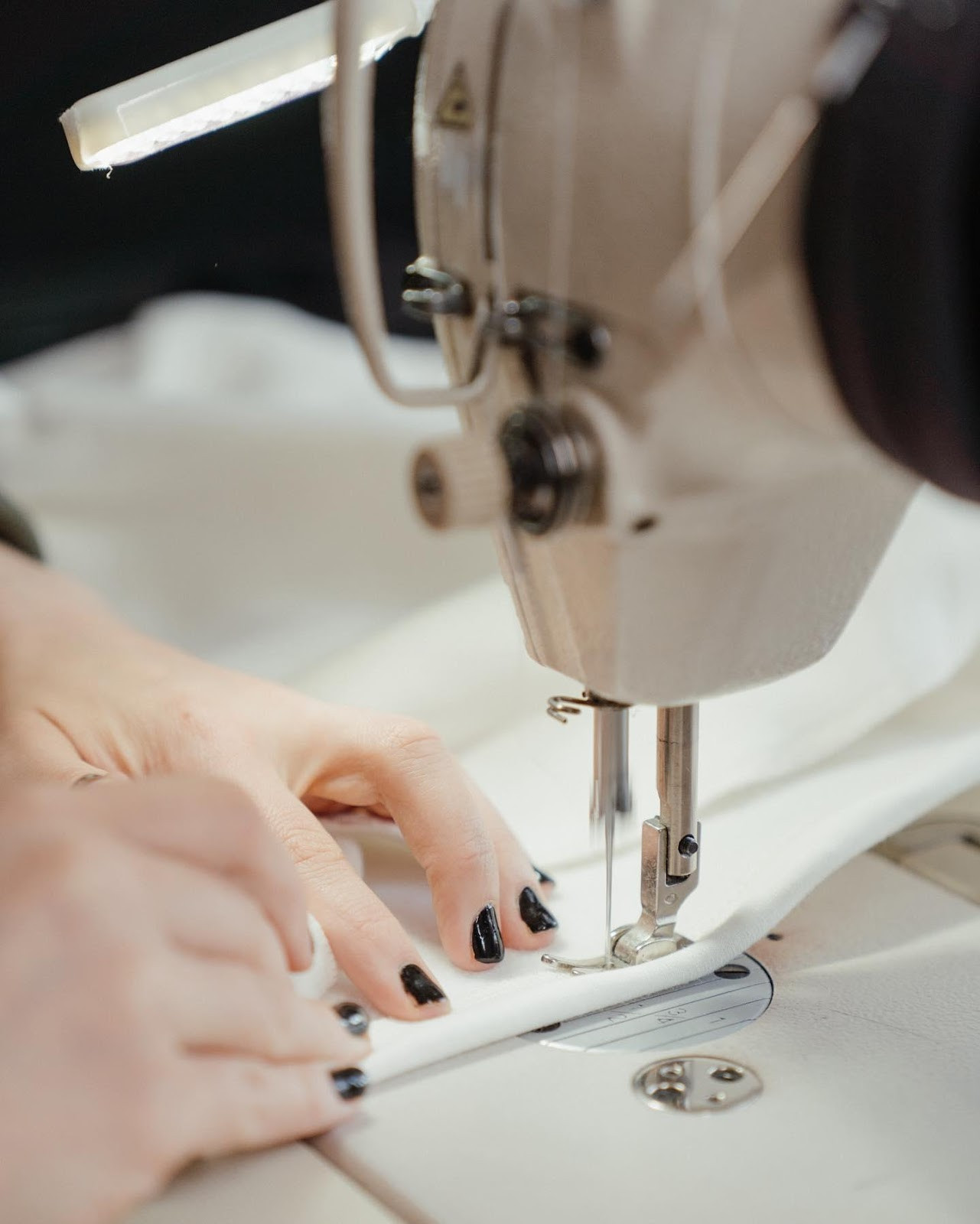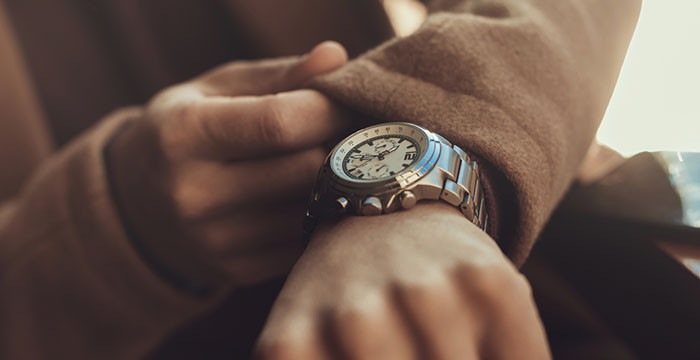Improperly fitting watches can be uncomfortable and even pose a safety risk. However, resizing a timepiece for a perfect fit doesn't require any special powers. There are various simple methods to adjust metal, leather, and other watch bands as needed. This comprehensive guide provides multiple safe DIY options, as well as guidance on when to seek professional assistance from a jeweler for watch resizing.
When You Should Consider Resizing Your Watch
Wristwatches that are either too loose or too tight can both present issues. A watch that moves around on your wrist is susceptible to falling off and being lost or damaged unknowingly. On the other hand, bands that are overly snug can restrict blood circulation to your hand, impact the performance of mechanical watches, and cause discomfort throughout extended wear. Consider quality bands made of rubber or leather, or other materials that will keep its shape for long.
As you get older, changes in weight and skin elasticity may affect the fit of your gear over time. Unless you have an adjustable watch, it's likely that you'll need occasional resizing throughout many years of owning it. To ensure optimal wearability and accuracy, have your watch assessed whenever it feels loose, moves excessively on your wrist, or leaves marks on your skin after wearing it for a short time. Children may also require frequent wrist checks and adjustments to their band size as they grow.
Resizing With a Jeweler

When it comes to valuable watches such as Rolexes or heirloom timepieces, the best and safest choice is to have them resized by a skilled jeweler or authorized dealer. Such professionals possess the necessary tools and expertise to ensure the watch remains protected throughout any modifications. This is particularly important for vintage or delicate materials like leather, which are susceptible to damage in the hands of inexperienced individuals.
The process involves assessing the current dimensions of pins, links, and clasps. The jeweler will then skillfully eliminate any excess links or replace the watch band to align with your desired fit requirements. A competent professional will not solely rely on visual inspection to determine proper tightness but will instead accurately measure the contact and center points of the timepiece case on your wrist bone. Depending on the watch style, they may also suggest incorporating half-links on metal bands to achieve the most personalized and precise fit.
Although there may be a higher cost associated with visiting a jeweler, it is often worthwhile to protect valuable watches that cannot be replaced. However, ensure that you consult a qualified expert. Generic jewelry chains found in malls may not have the same level of expertise and training as higher-end watch dealers.
Using a Watch Resizing Kit
To find affordable and lower-risk solutions for resizing everyday timepieces, consider using DIY watch resizing kits. These kits are widely available online or at jewelry supply retailers. A good quality starter kit typically includes pin removers, link removers, tiny screwdrivers, extra pins and links, and a watch band holder to ensure a secure grip during the resizing process.
Refer to the instructions given with the kit for your watch style and links. Generally, the tools included in the kit are used to detach pins and remove excess links in order to achieve the desired tightness on your wrist. For simple metal link bands, you will only need pliers and basic hand strength to reconnect them. Shake the loose links cupped in your hands over a table to avoid dropping a pin, as they are tiny and difficult to recover. To ensure proper alignment and spacing, remove full links instead of breaking them.
Resizing a watch yourself is ideal for metal bands and can be done with most consumer watches valued under $500. However, it requires patience, precision, and a commitment to closely following reliable guides to prevent any potential damage. Note that DIY kits are not suitable for adjusting pinned leather, rubber, or woven fabric watch straps, as they require alternative modification methods.
Consider an Adjustable Watch Band
Instead of fixed sizes, adjustable watch bands offer the flexibility to customize the tightness according to your preference. This can be easily done by sliding a mechanism on the closure clasp. Leading companies such as Apple and Samsung now use removable bands on their smartwatches and fitness trackers, making self-adjustment effortless and convenient.
This adaptability is beneficial as your wrist size may change over time or due to different fitness routines - and the best part - no tools are required! The adjustable links also provide security, preventing the loss of watches that tend to slip off your arm. For optimal blood flow during exercise, you have the option to choose a looser band adjustment, which can be quickly tightened afterward.
One potential drawback is that sliding bands may not offer the same level of robust stability and seamless fit as fixed metal link designs. Therefore, they are more suitable for casual usage rather than activities like diving, intense sports, or specialized wristwear requirements.
When to Let a Professional Handle It
While watch self-resizing is possible for many basic timepieces, some special instances do call for letting a professional take over:
- High-end luxury or vintage watches where damage impact is greatest
- Intricate band link designs like Breguet styles
- If you have no experience with detailed handiwork and patience
- You’re unsure about watch band components or material
- Any signs of issues like stuck links or cracked leather
If you are not confident in safely resizing on your own, entrust priceless heirlooms and expensive investments to the expertise of a professional jeweler. Before handing over your timepiece, inquire about their experience with your specific brand and style to ensure proper care.
Conclusion
Ensuring your watch fits properly on your wrist is essential for comfort and preventing the risk of loss due to excessive looseness. Luckily, resizing bands made of metal, fabric, leather, and other materials can be easily done using DIY kits, adjustable links, or professional jewelers. With this knowledge about achieving the perfect watch fit, you can choose the most suitable method for your timepiece type and budget.
Post Comment
Be the first to post comment!






